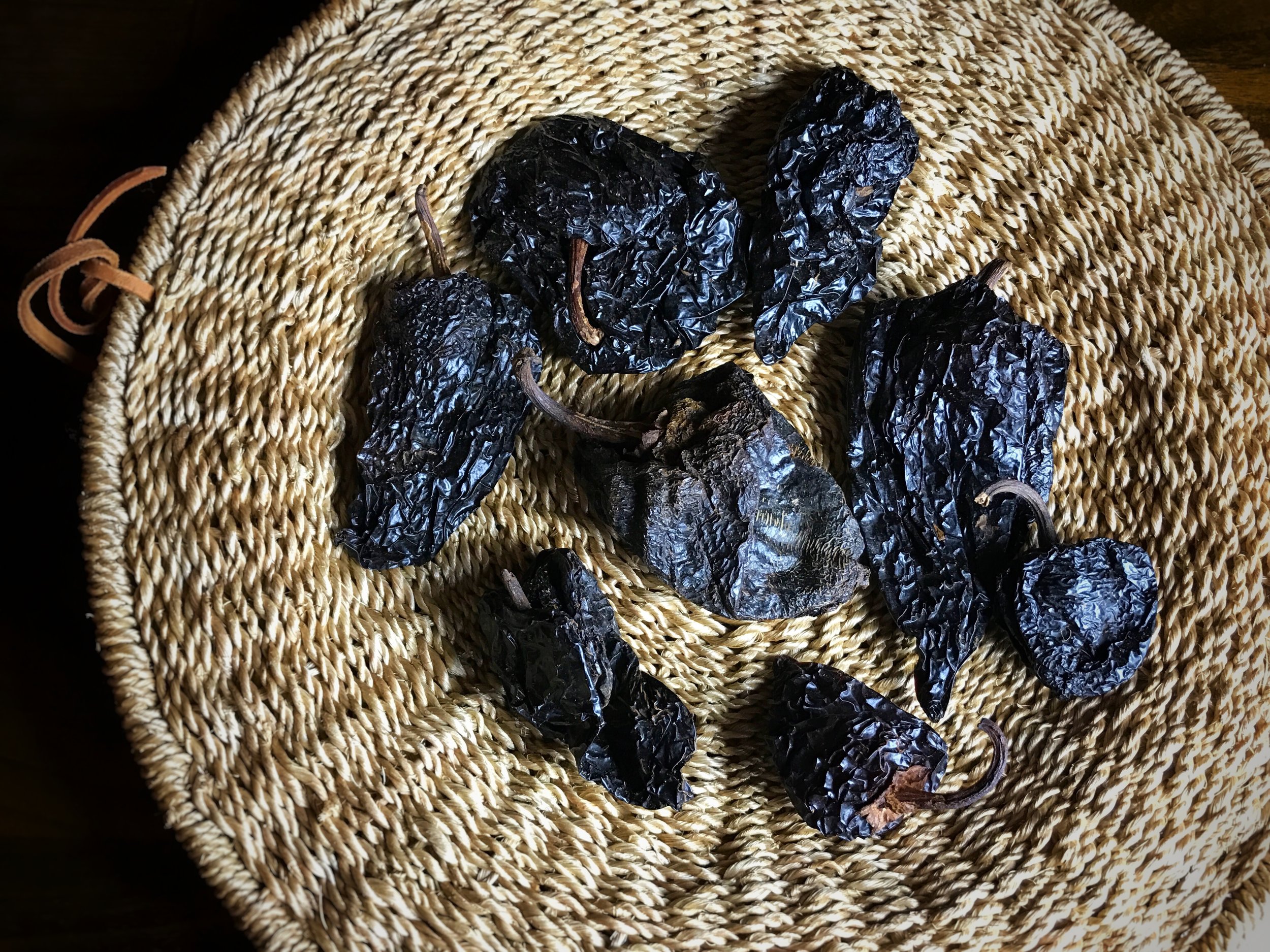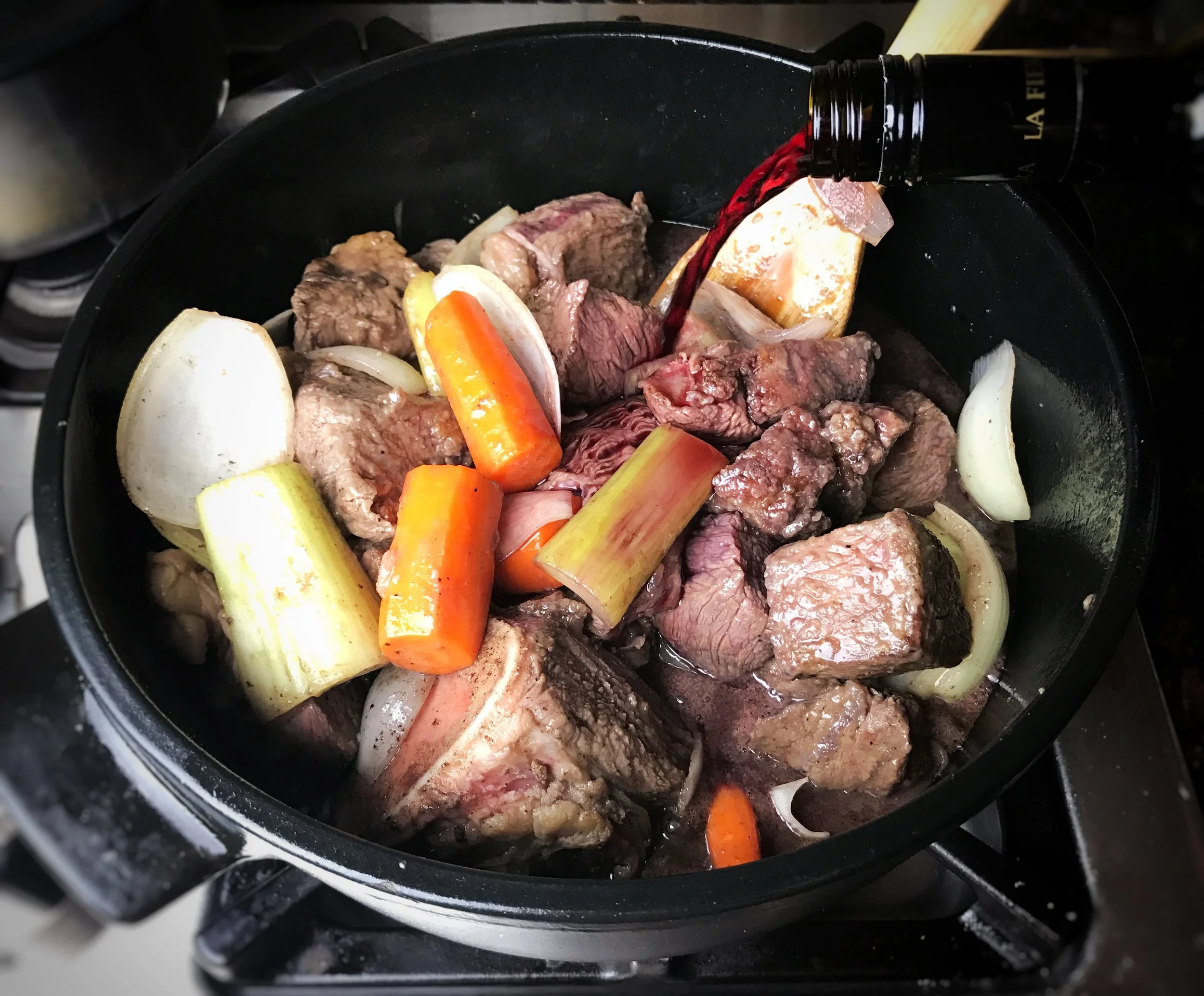This year's Bastille Day feast starts with make-ahead smoked trout pâté, served with crackers and endive leaves.
Because I'm almost French (I've been married to a Frenchman for almost 22 years; one of these days I'll get around to applying for French citizenship), I love to celebrate Bastille Day. Going to a restaurant isn't usually what I feel like doing, partly because there aren't many good French restaurants in Dallas, where we live.
Referred to in France as le Quatorze Juillet, or la Fête Nationale, or la Fêt' Nat – never Bastille Day – the holiday rarely falls on a weekend, which creates a quandary: How to pull together something deliciously French after working all day?
This year, I think I found the answer: Make it rustic and easy, prepare a couple things the night before, invite friends over after work and light up the grill.
Laid-back apps – like marinated olives, asparagus vinaigrette, a freeform savory tart, maybe a saucisson or some store-bought pâté with baguette toasts – are totally festive with glasses of rosé, chilled Lillet garnished with orange slices, or (my favorite!) Ricard.
Or hey – why not pour a pet nat, since it rhymes with Fêt' Nat! What's a pet nat? It's short for pétillant naturel – the natural sparkling wines, often from France, that are hugely popular in wine circles these days. (If you're new to the natural wine phenom, here's an excellent article, co-authored by my friend Michalene, explaining it.)
Flipping through award-winning cookbook author Georgeanne Brennan's beautiful new book, La Vie Rustic: Cooking & Living in the French Style, I found plenty of delicious-looking inspiration, starting with her super-easy recipe for smoked trout pâté.
Honestly, it couldn't be easier: You just mash together smoked trout with crème fraîche, lemon zest, chopped tarragon and one or two other things, pack it in a crock and that's it. While you can make it just before serving (in no time flat), it's the perfect thing to mix up the previous evening and let chill in the fridge. Serve it with Belgian endive leaves and crackers or toasts. Brennan writes in her book that it also works well with smoked salmon – something I'll be trying soon (with dill or fennel leaves, probably!).
Also inspired by Brennan's book, I've lately become addicted to grilled artichokes. But while Brennan serves them with a yogurt-and-mayo-based herb dip (which also looks really good), I've been pairing mine with garlicky aïoli, one of my favorite substances in the world. This summer I can't get enough of it.
The artichokes can be mostly prepared the night before, as well – boil them, trim out their chokes, stash them in the fridge and make the aïoli (which probably even gets better as it sits overnight; the garlic mellows). When you're ready to serve them, just brush the artichoke halves with a little olive oil and plop them on the grill – along with halved lemons as a squeezable garnish, if you like.
For a main course, you can keep it super simple: Throw some duck breasts or a butterflied leg of lamb on the grill. You can even pick up a roast chicken (very French!) or two at the supermarket; serve it with Dijon mustard and cornichons, and French side dishes. You can blanch some haricots verts, for instance, and toss them with a little red wine vinegar, your best olive oil and some minced shallots; finish with fleur de sel and lots of freshly ground black pepper.
Or make a warm French lentil salad – which you can either toss together in less than a half hour and serve warm, or prepare the night before and serve room temp.
Here's the easy, forgiving recipe:
Or, you know what? You can even do without a main course altogether, and just serve a bunch of delicious nibbles – French wine-bar-style.
For dessert, there are lots of possibilities. One of the easiest is also one of the most delicious: a berry and peach crisp. Put the almond topping together the night before, and it's very quick to put together and throw in the oven. Top it with whipped cream, or crème fraîche (you should have some left over from the smoked trout pâté), or a combo. Or serve it with vanilla ice cream.
Otherwise, if you make pastry cream the night before, you can put together a quick and easy berry tart – with the colors of the French flag!
Here are those two recipes:
Alternatively, you could make a chocolate mousse or pôt de crème the night before (yikes - I need to create some chocolate French recipes for the site – will do that soon!) Or play hooky from work and make a gorgeous stone-fruit tart. Or make profiterôles – cream puffs filled with ice cream and drizzled with chocolate sauce. That's another easy recipe I'll put together soon.
You could also do what so many French people do – pick up something lovely at the bakery.
Or take a tip from my French relatives, and slice up a ripe peach into the glass of red wine you've been sipping. It can't get any easier – or more delicious – than that.
So, want more ideas? Take a spin through Cooks Without Borders' French page – updated recently with a bunch of new recipes. Sound good?
Happy Bastille Day! Vive la France!





























































































